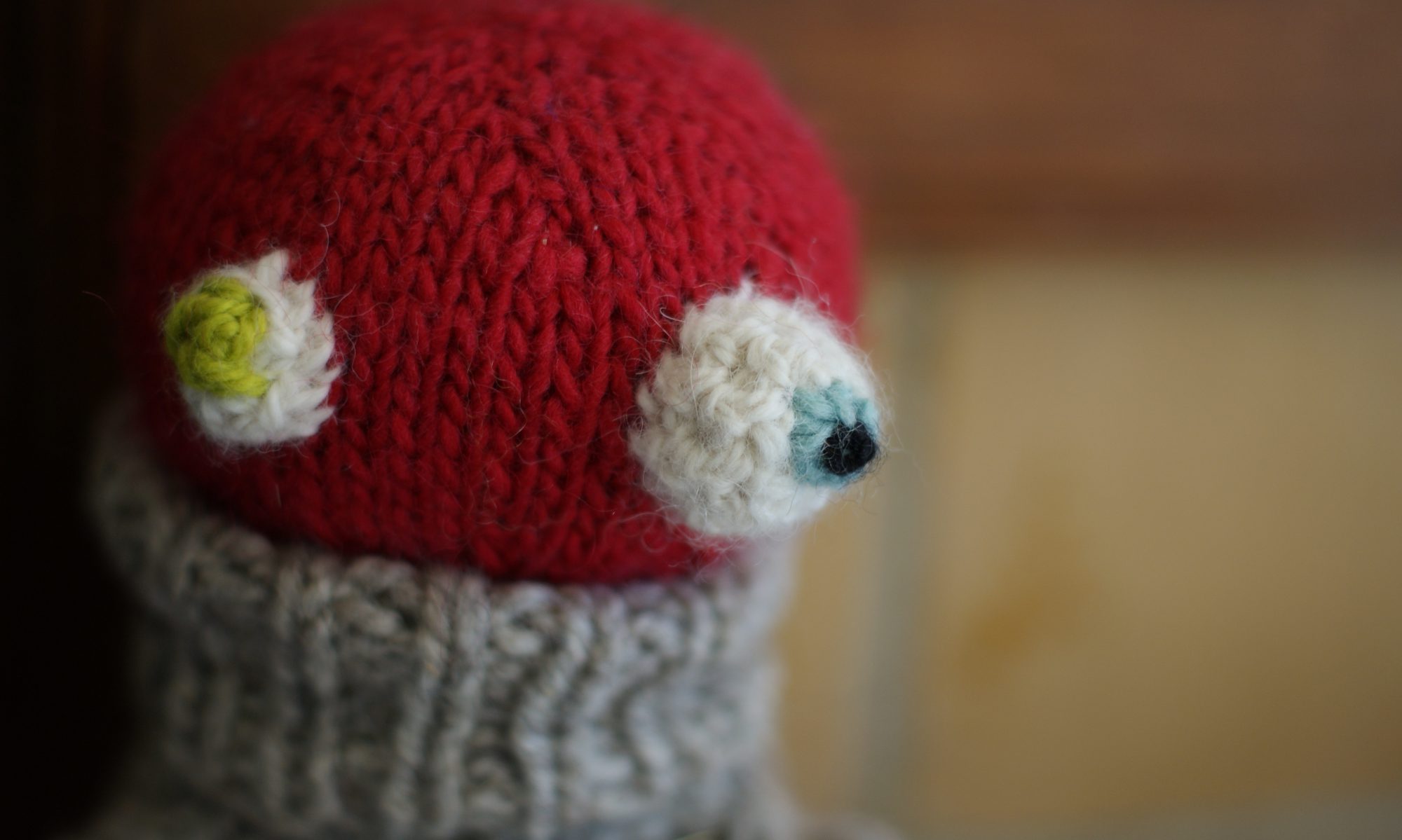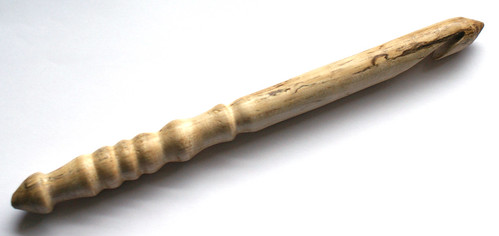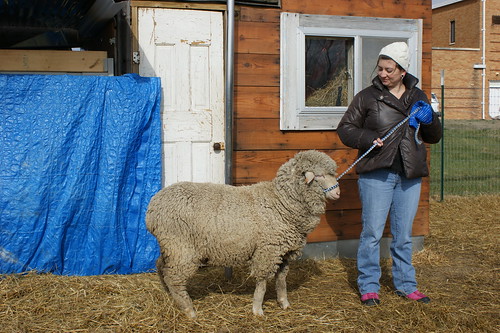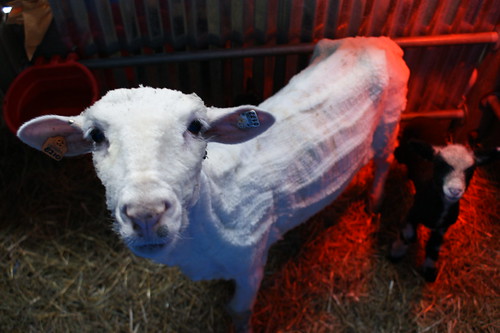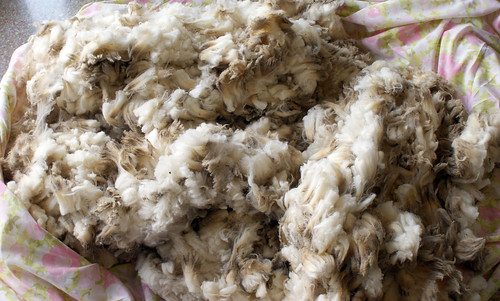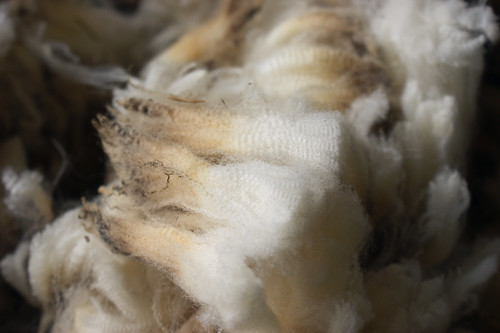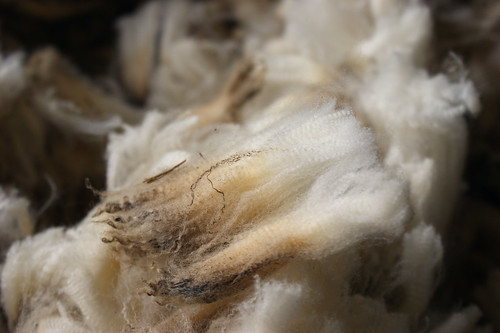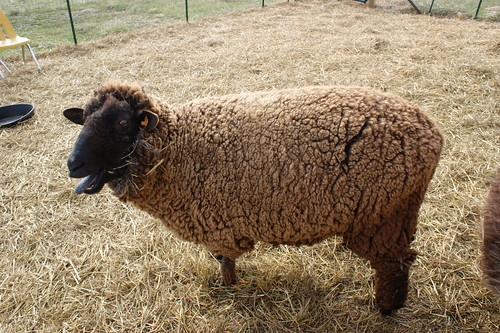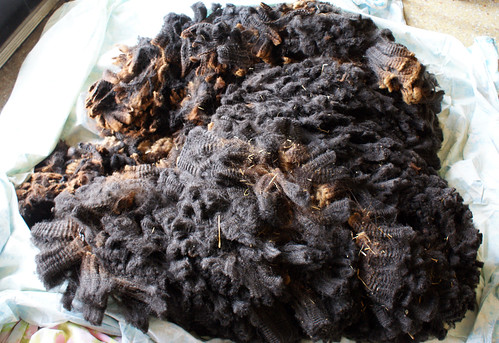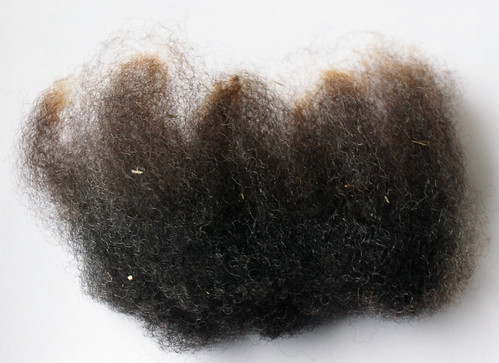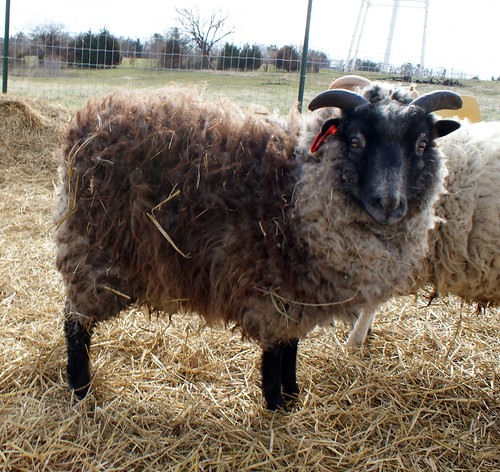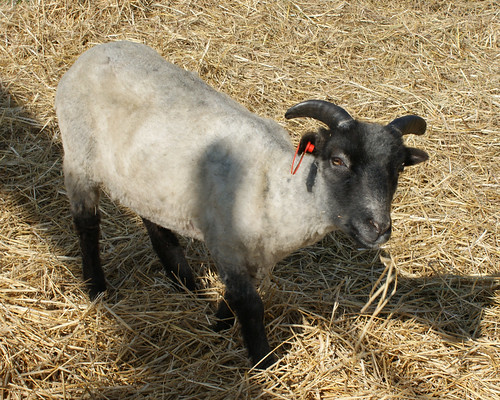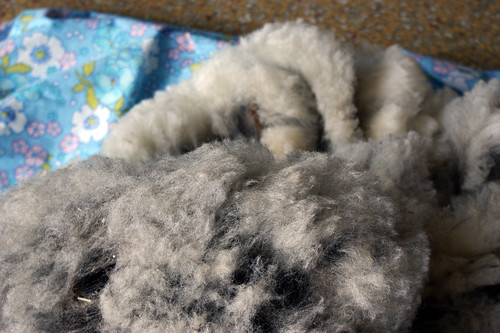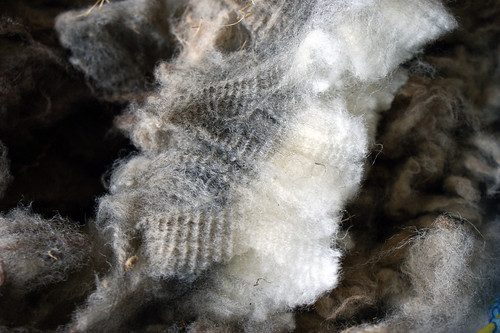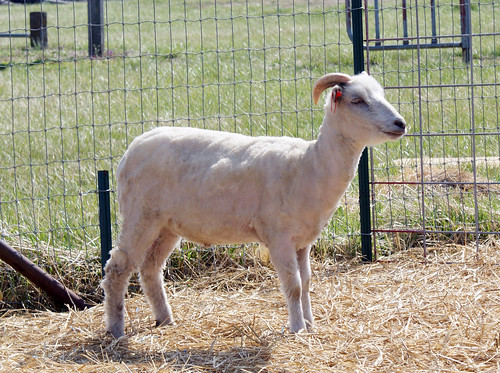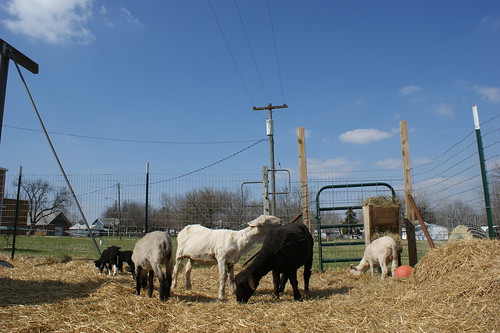Before I get started, if you’re interested in maybe getting a few sheep and want a great primer that won’t scare you off, read Living with Sheep: Everything You Need to Know to Raise Your Own Flock. It’s awesome (so’s Living with Chickens
), and it gives a great overview from the perspective of someone who remembers what it was like to be a novice and isn’t embarrassed to admit when he still doesn’t know the answer. It’s funny and highly readable. If you decide to go for it, also get Storey’s Guide to Raising Sheep: Breeds, Care, Facilities
. It’s by Paula Simmons, author of Spinning for Softness and Speed
, Spinning and Weaving with Wool, and other coveted out-of-print spinning classics.
I’ve gotten several questions about keeping sheep, and while I’m pretty inexperienced, I’m big on evangelizing all of my interests, so I’m going to try to write up little primers here and there on what I learn about keeping sheep, in case anyone is interested.
In response to this post, I’ve gotten some questions about docking, so I thought I’d share what I know & why I chose to dock. I’m not inviting discussion or debate; I’m just telling you why I think it’s a good idea and why I chose to do it to my lambs. There are people who are universally against it; and while docking for cosmetic reasons (e.g., breed standards in dogs) isn’t my cup of tea, docking in sheep is for much more practical reasons (and banding in particular is minimally invasive and disruptive).
Know that my knowledge is by no means comprehensive. I’ll just tell you what I know.
Most sheep are born with long tails. Long, adorable, wiggly tails that they whip around like mad when they nurse. (There are exceptions: Shetland and Finn sheep are two breeds with naturally short tails.) But sheep don’t hold their tails up like goats or dogs, so when they get older and their tails get fat and woolly, they become giant hairy poop magnets, which invites flies to lay eggs in the poopy dreadlocks. The eggs become maggots which can burrow into the skin and become very painful and can lead to secondary infection.
Now the back end of a sheep in full fleece is never an overly tidy place, but having the tail out of the way and not creating a nice, warm, protected fly spa environment certainly helps. And the sheep’s dense coat can make little wounds, etc. difficult to spot even in optimal situations. If you’re planning to breed, having the tail out of the way also makes things more tidy for breeding and more hygienic for lambing.
Keep in mind also that sheep are prey animals, and as such, they’ve evolved not to show any signs of illness or weakness to avoid predation. That’s why sheep and other prey animals often seem perfectly healthy until they drop dead. Now, I’m sure an experienced shepherd can see the nuance in sheep behavior, but I don’t know squat. For a novice shepherd, I figure it’s best for both my mental health and for the critters to minimize any risks we can. Also, I’d just as soon not have to wash or get swatted by a poopy tail. So: docking it is!
Docking is the process of shortening or removing the tail. In the case of livestock, it can be done a number of different ways: chop, chop, stitch, stitch; chop and cauterize (burn to close the wound), separately or all in one step with a special piece of equipment; or banding, which puts an extra-tight rubber band around the tail that cuts of the circulation so that the tail eventually withers and falls off. The band, which looks like a plastic Cheerio, is stretched with a special pair of pliers called an Elastrator (see previous post) and applied to the tail. Banding is becoming increasingly popular because it’s cheap, doesn’t require special skills, is easy on the animal, and carries little risk of infection, because there’s no open wound. For those of us who weren’t raised around livestock and view pets as family and tend to think much of animal husbandry seems scary and occasionally brutal, it’s also the least painful for us.
What’s the downside to docking? Well, I guess that depends on the method, but honestly, with banding, I don’t see a downside (again, I’m not an expert, so there may well be potential complications I don’t know about). They say if you do it in the first 24 hours, the lamb’s nervous system is still in birthing mode, which means the lamb is less sensitive to pain in general. If you’re at all concerned, you can give them a shot of a numbing agent like Lidocaine. That’s what Tina from Ewephoria did before she banded the merino lambs, and they had absolutely no visible reaction at all to being banded. I don’t know whether it’s because it was within the first 24 hours, or because of the injection, but they honestly had no reaction whatsoever. We did give the lambs Bar-vac CD/T, which includes a tetanus vaccination, and penicillin, as a precaution, and I think that’s a fairly common procedure.
Now, with the Romney lamb, I got busy with the Sunflower Knitaway we were hosting and forgot to take care of his tail within the first 24 hours. We got to it within 48, which is still considered acceptable. Now, he did react to it, but that was largely do to my handling the whole thing really badly. For one, it was his first extended time out of the barn at all (for comparison, I waited over a week before letting the tiny twins out), AND we had a bunch of strangers here getting everyone generally excited, then Cara just happened to drop by during the hubbub. (Cara’s my neighbor who raises goats, and she’s been very generous with advice & assistance). We banded him a little too low, but I couldn’t tell until he was in with the other lambs. At that point, he seems a bit confused, like he thought someone was pulling his tail, but he wasn’t bad off. He ran around a little, but acted more or less normal.
But by the time we took him out of the pen again, got the old band off and put the new band on–with him fed up bleating and wiggling the whole time, and me fussing and fretting, and Cara’s kids running around on top of the barn and yelling, and all the strangers looking on and chatting, and the Shetlands giving him the odd thump, and his mama too busy stuffing her face to check on him, he was more than a little freaked out and overheated and kept collapsing and panting (remember, he was less than two days old and not particularly steady on his feet under ideal circumstances). It was clearly stressful on him, but I have to attribute that to my poor management rather than the banding itself. I’m sort of a 3-ring circus kind of gal, which doesn’t make things easy on anyone.
If I could do it over, I’d do it in the barn, no distractions, just the lamb and his mama there, and I’d obviously make sure I had it in the right spot from the get-go. Then I’d leave them alone immediately. I think that’s the hardest thing to do: get in, do what you need to do as quietly and with as little fuss as possible, then get the hell out. That’s probably good advice for most of life, but it’s particularly useful with sheep.
In any event, within an hour, he was perfectly fine again. It does’t take long for the tail to go numb; and as soon as it does, they forget all about it.
(Check out the last post for before and after tail pictures.)
